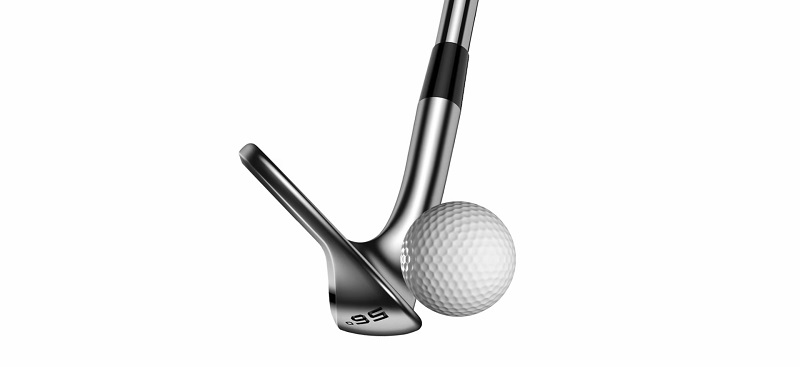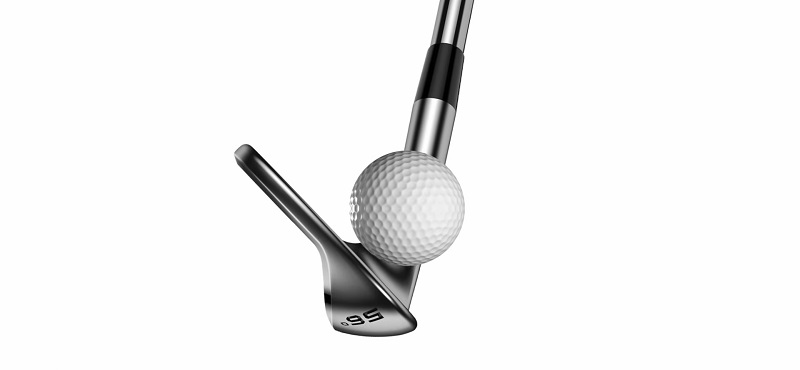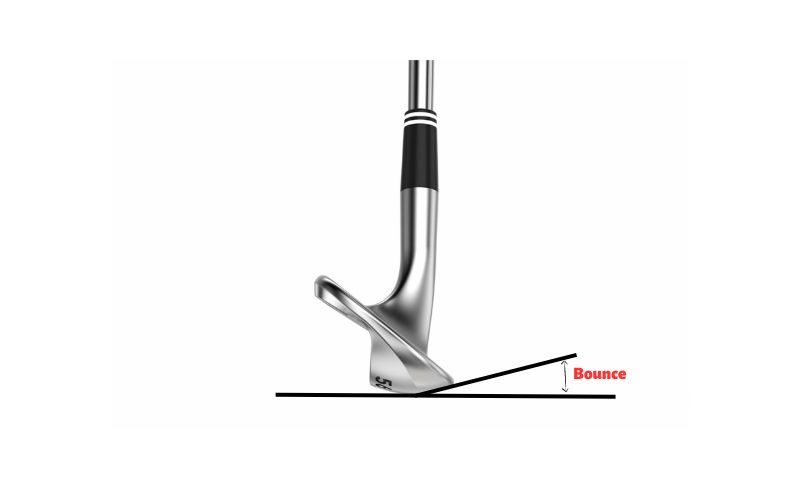Wedge bounce may be a term that golfers have heard before, but not everyone is aware of its true significance when it comes to the short game.
Understanding the nuances of bounce and how to choose the right wedge for each shot can make a huge difference in a golfer’s performance.
Let’s take some time to learn about this important aspect of golf club design so you can take your game to the next level and master shots from around the green.
What Is Bounce On A Wedge In Golf And Its Purpose?

Wedge bounce is a critical component of a golfer’s short game. It pertains to the angle between the leading edge and the lowest point of the sole or trailing edge of a club that contacts the ball.
This angle can dictate the club’s impact on the ground and the resulting ball spin. A wedge with higher bounce degrees elevates the leading edge of the club, minimizing the chances of fat shots or digging into the turf.
Hence, having the right wedge bounce and grind option can significantly affect one’s control and consistency. As Bob Vokey puts it, bounce is your friend since it forgives any mistakes and enables you to make proper contact with the ball, ensuring a better result.
Different Types of Bounce On Wedge
Understanding the different types of bounce on a wedge golf club is crucial for improving your technique and game. Here are some of the most common types of bounce on a wedge:
Low Bounce Wedges
Low bounce wedges are a specific type of wedge that has a loft angle between 4°-6°, making them ideal for firm turf conditions and bunkers with hard, coarse sand.
Although low-bounce wedges offer the least amount of forgiveness, they are designed with clean ball contact in mind, allowing for exceptional precision in short-game shots.
Golfers with confidence in their hands and versatility in their swing can take advantage of low-bounce wedges’ offerings, making them a versatile weapon in the hands of their game.
Mid Bounce Wedges
When it comes to wedge bounce options, the mid-bounce range between 7°-10° is a popular choice among golfers. Designed for firm to normal turf, these wedges offer excellent distance and trajectory control for creating shots around the green.
The mid-bounce wedge is versatile and can be used successfully on a variety of course conditions. While accommodating almost all swing types, this wedge works best with a neutral swing style and a moderate attack angle.
For those looking to up their short game, a mid-bounce wedge is undoubtedly a viable option.
High Bounce Wedges
High-bounce wedges are a game-changer for golfers who frequently play on soft turf, fluffy lies, or bunkers with soft sand. These wedges feature a bounce angle of more than 10°, making them ideal for preventing the leading edge of the club from digging too deep in the sand.
High-bounce sand and lob wedges also provide forgiveness in a wedge, giving players more control over their short game.
Despite popular belief, high-bounce wedges aren’t reserved for only low-handicap golfers. In fact, they can benefit players of all skill levels.
Moreover, players who take deep divots with a digger swing style and steep attack angle stand to gain the most from using high-bounce wedges.
Being able to generate a lot of spins, these wedges allow players to execute delicate shots with ease and precision, making them a must-have in any golfer’s bag.
How Bounce On Wedge Affects Shots?

Having the right wedge with the correct bounce angle can make a huge difference in how you hit shots. For instance, low-bounce wedges offer the most control and are ideal for precision shots from around the green.
High-bounce wedges, on the other hand, provide more forgiveness and lift your ball out of bunkers or soft turf with ease. As a result, you will see improved accuracy and greater distance in your shots.
Ultimately, the type of bounce on your wedge can affect not only the contact between the club and ball but also the resulting trajectory and spin rate. Therefore, it is essential to understand which types of wedges are best suited for different course conditions so that you can make the most of your shots.
How to Choose the Right Wedge Bounce?
Choosing the right wedge bounce depends on a variety of factors, such as your swing type and attack angle, course conditions, preferred playing style, and ability level.
If you are prone to taking deep divots or have an aggressive swing style with a steep attack angle, then a high bounce wedge is what you need. On the other hand, if you use a neutral swing style and prefer to play precision shots from around the green, then low-bounce wedges are ideal.
Mid-bounce wedges offer a good balance of control and forgiveness, making them suitable for golfers of all skill levels. Additionally, consider the type of turf on your course when making your decision – high-bounce wedges work best on soft turf, while low-bounce models are ideal for hard surfaces.
By taking all of these factors into account, you can choose the right wedge bounce to suit your game and playing style. Doing so will help you maximize your performance when out on the course and enjoy a successful round of golf.
Wedge Bounce vs. Grind: What’s the Difference?

Wedge bounce and grind both refer to features that affect the performance of a wedge. While bounce is the angle between the sole of the club and the leading edge, the grind is manipulating or removing material from the sole of a club and can enhance contact with the turf.
Bounce helps control ball flight and spin, while grind affects the leading edge of the club and how it interacts with the turf. Depending on your swing style, attack angle, course conditions, and ability level, you may need a different combination of bounce and grind to match your game.
For instance, if you like to play with a steep attack angle and take deep divots, then you should opt for a high-bounce wedge with a wide sole grind. This will make it easier to hit shots with more control and spin. Similarly, a low-bounce wedge with a narrow sole grind is ideal for golfers who prefer a neutral or shallow attack angle.
By understanding the differences between wedge bounce and grind, you can make an informed decision that will improve your performance on the course.
Conclusion
The type of bounce on your wedge can significantly impact shot trajectory and spin rate. Different wedges are suited for varying conditions, swing styles, attack angles, and abilities. Choose the right wedge to maximize performance on the course. Understanding wedge bounce and grind will help you find the perfect combination for your game. Use these tips to select a club that meets all your needs confidently.


